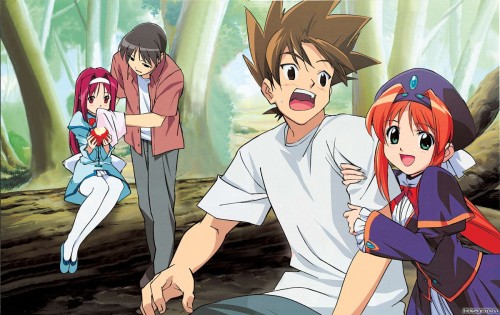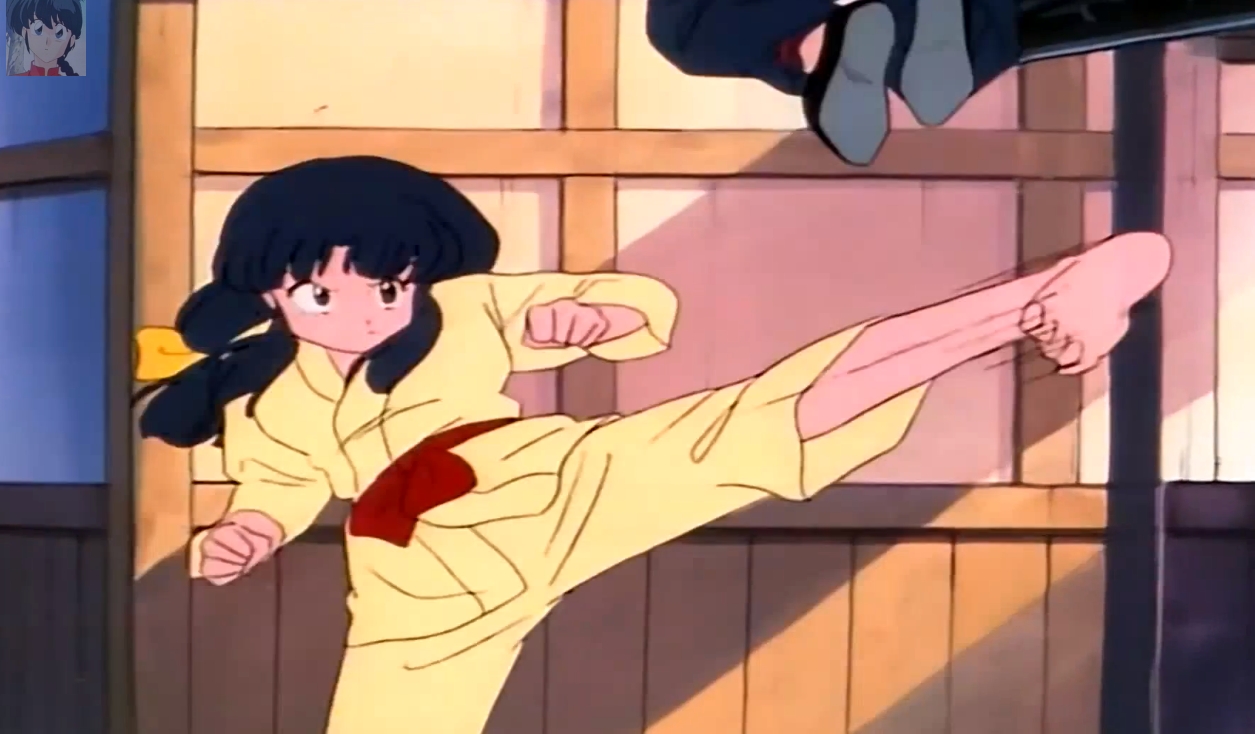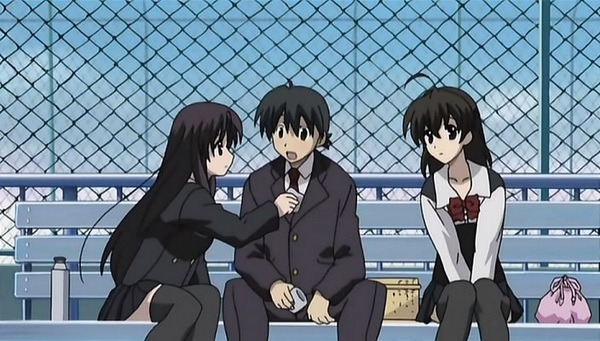
I only found myself mentally calling Kotaro an idiot once throughout the 12 episodes, which is quite a feat for an anime such as this. Most of the time, male protogonists frustrate me with their foolish and superficially dense behavior. You don’t see such here. The fumbles Kotaro and Akane make are realistic and, even better, they realize they screw up and work to fix it. The story is filled with awkward, endearing moments of silence between them as they just don’t know what to say. But at the same time, the silence is never cold. It reverberates with the developing feelings they have for each other. They simply lack the vocabulary. Their feelings lack an overt sexuality too. They simply like each other for who they are. While some may view the innocence as unrealistic, I found it refreshing. Sexuality is overemphasized. Love can exist without sex. While sex may reinforce such feelings, we often confuse its hormonal drive as love.
I mentioned how As the moon, so beautiful feels realistic. In one scene, both use the Internet to research dating ideas. This realism extends toward a key element that Kotaro and Akane use to develop their relationship: a messenging app called LINE. Throughout the story, they use the app to keep in touch. They even comment in a scene how its easier to talk over the app than in person. This details captures modern dating culture well. Many people are more comfortable texting and sending online messages than talking in person, particularly at the start of a relationship. It can help people who are naturally quiet and, perhaps, a little shy–as with Akane and Kotaro. It also allows people to stay in touch when schedules refuse to cooperate, which is another detail the anime shows. In fact, LINE becomes essential to the Akane’s and Kotaro’s relationship as their schedules force them apart. Through LINE, they support each other’s efforts and cheer each other on. Akane with track and field. Kotaro with writing.
As the moon, so beautiful builds on the idea that people don’t need words to show their feelings. Akane and Kotaro act in little ways that cements their bond–little gifts, gestures, and even glances across the classroom. There is a great scene where Akane is running in an important event, but says she doesn’t want Kotaro to watch–even though she actually does. Kotaro picks up on this and goes to the event without her knowing (he messages his support over LINE) and then leaves before she could see him. Later Akane finds out he had done this, and it makes her happy. He had both supported her wishes of him not watching (which she says would fluster her) and her quiet desire for him to be there. Small actions like this shows an attentiveness to unspoken desires, which shows love. Granted, it’s easy to miss such things and expecting a partner to always realize what is unsaid can cause problems.
As the moon, so beautiful struck me as unabashedly Japanese. Kotaro pursues traditional dance at a temple and takes part in traditional festivals. The festivals and temples play key roles in the course of the story–providing important moments such as Kotaro’s confession to Akane on temple grounds. In many school-related anime, Japanese culture is downplayed for the safer, and more accessible, secular school scene. Sure, there are Japanese elements even within this, but they are the typical mainstay of anime: culture festivals, kimono, and the like. As the moon jumps into the elements usually ignored or glossed over, but it doesn’t seek to make them exotic or anything. Like LINE, the cultural elements and festivals are just a part of everyday life.
The normalcy of the story and the delicate handling of romance–the awkward silences, the online messages, the clashing schedules–sets As the moon apart from most other romantic anime I’ve seen. Too often, such stories use comedy and superficial cluelessness to create a blunt, stereotype-laced stories. As the moon uses many of the same tropes, such as love triangles, but it handles them with subtlety and care. The English version of the title has a poetic feel, and the story throughout holds the same feeling as the title. It has a crisp beauty to it and avoids feeling saccharine. The soft animation matches its realistic, understated focus.
Some viewers may grow frustrated with its quiet, realistic pace. For many episodes, apparently little happens. That is, unless you pay attention to the subtext. Behind the slow pace, much is going on: commentary about the role of the Internet in relationships, the effects of others’ opinions on relationships, and how love affects friendships. But all of the messages are subdued and remain a part of the environment the romance develops within. There isn’t any fighting or action scenes. There isn’t any fan-service or sexual comedy. The awkwardness and the silent scenes may prompt some viewers to yell at the screen. But for those who like character-focused stories, stories of two people awkwardly learning about each other, stories based on realism, check this one out.







This was a wonderful, wonderful series – I wish more people would check it out! One of my absolute favorite romance anime!
It is one of the best romance anime I’ve seen since….Renton and Eureka in Eureka Seven, and even they weren’t handled as well in many regards.